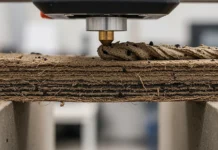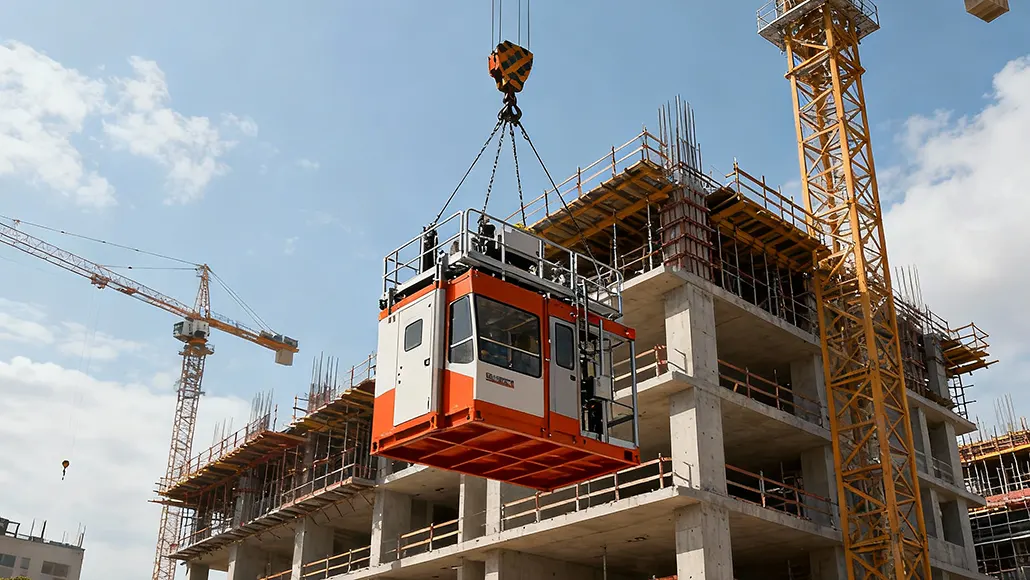Robotics and Automation in Construction Lifting Systems
The construction industry experiences a technological renaissance as robotics automation construction lifting transforms fundamental aspects of material handling and vertical transportation. This evolution addresses persistent challenges including labor shortages, safety concerns, and demands for increased productivity. Robotic systems and automated lifting technologies now perform tasks that previously required extensive human intervention, delivering precision and consistency that redefine operational standards across construction sites worldwide.
The Emergence of Intelligent Lifting Systems
Construction sites have traditionally depended on skilled operators managing complex lifting equipment through manual control. This approach, while effective, introduced inherent limitations including human fatigue, judgment variability, and physical risk exposure. The integration of robotics automation construction lifting represents a fundamental shift away from these constraints, introducing systems capable of continuous operation with consistent precision.
Modern automated hoisting systems incorporate programmable controls that enable precise motion management, load handling optimization, and real-time monitoring. These systems eliminate human error from routine operations while freeing personnel to focus on higher-value supervisory and decision-making responsibilities. The transformation extends across multiple lifting equipment categories, from tower cranes and material hoists to specialized robotic lifting platforms.
The construction robotics market has gained substantial momentum, with industry adoption accelerating as systems prove their reliability and economic value. Contractors increasingly recognize that robotics automation construction lifting addresses fundamental operational challenges while positioning organizations competitively in a rapidly evolving technological landscape. Early adopters report significant improvements in productivity metrics, safety records, and project timeline adherence.
Robotic Lifting Platforms and Automated Material Transport
Specialized robotic lifting systems have emerged to address specific construction logistics challenges. The LiftBot, developed by KEWAZO, exemplifies this innovation category. This robotic construction lift automates material transportation for scaffolding applications, using artificial intelligence and advanced robotics to transport materials vertically without traditional manual handling. The system operates independently, finding destinations automatically and transporting materials at double conventional speeds while recording efficiency data for analysis.
Such systems deliver multiple operational advantages. Workers avoid climbing ladders or operating at heights, reducing fall risks that represent leading causes of construction injuries. Installation requires minimal time, approximately twenty minutes, and the battery-powered wireless design enables deployment in diverse locations without electrical infrastructure modifications. The automation reduces labor requirements while increasing throughput, addressing both safety and productivity objectives simultaneously.
Similar robotic platforms serve warehouse, port, and industrial construction applications. These systems navigate complex environments autonomously, avoiding obstacles while maintaining precise load control. Advanced versions incorporate machine vision systems that identify materials, assess dimensions, and determine optimal handling approaches without human input. The versatility of these platforms makes them valuable across construction phases, from initial material delivery through interior finishing operations.
Automated Crane Operations and Three-Axis Control
Crane automation represents another significant dimension of robotics automation construction lifting. Modern systems execute three-axis operations—simultaneous rotation, boom movement, and winch control—while minimizing load sway through sophisticated algorithms. After operators complete initial hooking and ground-cutting operations, automated systems transport loads to specified coordinates without further intervention.
Japanese construction companies have pioneered crane automation technologies, with major firms developing systems capable of autonomous operation in confined urban environments. These systems incorporate real-time sensor fusion, combining data from cameras, LiDAR, and positioning systems to build comprehensive environmental models. The crane control software analyzes this information continuously, adjusting movements to avoid obstacles, maintain safe clearances, and position loads precisely.
The operational performance of developed automation software now matches intermediate-level human operators, with continuous improvement expected as machine learning systems accumulate operational experience. This capability proves particularly valuable on projects requiring repetitive lifting patterns, where automated systems execute sequences consistently without the performance degradation associated with human fatigue.
Advanced automation extends to multiple crane coordination, addressing the complexity of large construction sites where several cranes operate simultaneously. Coordination systems prevent collisions by tracking crane positions and load locations in real time, automatically adjusting movements when interference risks emerge. This capability enables more efficient site utilization while maintaining safety standards that exceed manual coordination capabilities.
Rebar Installation Robotics
Specialized construction robotics have emerged for specific tasks that traditionally demanded intensive manual labor. Rebar installation provides a compelling example, with systems like TyBot and IronBot revolutionizing reinforcement placement. TyBot self-locates and self-positions without pre-mapping or BIM input requirements, tying over 1,200 rebar intersections hourly. IronBot complements this capability by lifting, carrying, and placing rebar bundles autonomously.
These systems address multiple construction challenges simultaneously. The combination cuts project schedules substantially, with some implementations reporting fifty percent reductions in rebar installation time. Labor requirements decrease as robots handle physically demanding repetitive tasks, while workers focus on supervision and problem-solving. Consistency improves as automated systems maintain steady production rates regardless of environmental conditions or time pressures.
The safety benefits prove equally significant. Rebar installation traditionally requires workers to navigate across partially completed slabs, bending repeatedly to position and secure reinforcement. These activities generate repetitive stress injuries and create fall risks. Robotic systems eliminate direct worker involvement in hazardous aspects while maintaining or exceeding installation quality standards. The injury risk reduction extends worker career longevity while decreasing workers’ compensation costs and project liability exposure.
Internet of Things Integration and Smart Hoisting
The integration of IoT technologies with robotics automation construction lifting creates intelligent systems that continuously monitor performance and communicate status information. IoT-enabled hoists share real-time data including load information, operational duration, and maintenance needs with site management systems. This connectivity enables proactive maintenance scheduling, performance monitoring, and resource optimization.
Predictive maintenance capabilities represent particularly valuable IoT applications. Sensors track motor temperature, vibration patterns, brake wear, and cable condition, identifying degradation before failures occur. Maintenance teams receive advance warning of developing problems, scheduling interventions during planned downtime rather than responding to emergency breakdowns. This approach minimizes project disruptions while extending equipment lifespan through timely preventive actions.
Performance analytics derived from IoT data provide insights that drive continuous operational improvement. Project managers track utilization patterns, identify bottlenecks, and optimize material flow based on empirical evidence rather than assumptions. The transparency enabled by connected systems supports more accurate planning, resource allocation, and schedule development for future projects.
Energy efficiency improvements often accompany IoT integration. Smart systems monitor power consumption patterns, identify waste, and implement optimization strategies that reduce energy usage without compromising performance. Automated shutdown of idle equipment, optimized movement paths, and load-appropriate power application collectively decrease operational costs while supporting sustainability objectives.
Autonomous Mobile Robots for Material Handling
Ground-level material handling increasingly incorporates autonomous mobile robots that transport components and supplies across construction sites. These robots navigate independently using sensor arrays and mapping technologies, avoiding obstacles while following optimized routes. Integration with project scheduling systems enables proactive material positioning, ensuring required items reach work areas before crews need them.
The flexibility of autonomous mobile robots proves valuable across construction phases. During foundation work, robots transport formwork components and reinforcement materials. Structural construction phases benefit from automated delivery of steel components and concrete accessories. Interior finishing operations use robots to distribute materials systematically, reducing manual handling and accelerating completion.
Safety advantages emerge from removing workers from material transport duties in congested construction environments. Forklifts and manually operated material handlers present collision risks and require constant vigilance from operators and pedestrians alike. Autonomous robots incorporate sophisticated collision avoidance systems that detect and respond to humans, creating safer mixed-use environments where automated and manual operations coexist.
Workforce Transformation and Skills Evolution
The proliferation of robotics automation construction lifting reshapes workforce requirements and career trajectories. While automation reduces demand for certain manual labor categories, it creates opportunities for technical specialists capable of programming, maintaining, and troubleshooting sophisticated equipment. Construction companies increasingly seek employees with mechatronics knowledge, software familiarity, and systems thinking capabilities.
Training programs evolve to address these changing requirements. Technical education emphasizes robotics fundamentals, sensor technologies, and automation software alongside traditional construction skills. Apprenticeship models incorporate equipment programming and troubleshooting components, preparing workers for supervisory roles that oversee automated systems rather than exclusively performing manual tasks.
The transition proves less disruptive than initially feared. Rather than wholesale replacement of human workers, robotics automation construction lifting augments human capabilities and assumes tasks that prove physically demanding, monotonous, or hazardous. Experienced construction professionals bring invaluable judgment, problem-solving ability, and adaptability that automated systems cannot replicate. The most effective implementations combine automated execution with human oversight and decision-making.
Integration Challenges and Implementation Considerations
Successful robotics automation construction lifting implementation requires careful planning and systematic approaches. Equipment selection must align with project requirements, site conditions, and organizational capabilities. Premature adoption of inappropriate technologies generates frustration and undermines confidence in automation benefits, while delayed implementation cedes competitive advantages to more progressive competitors.
Infrastructure requirements deserve thorough assessment. Automated systems need reliable power supplies, adequate communication bandwidth, and sometimes modified site layouts that accommodate robotic operations. Return on investment calculations must account for these preparatory expenditures alongside equipment acquisition costs, training investments, and productivity improvements.
Change management assumes critical importance during automation adoption. Workers may initially resist technologies perceived as threatening job security or undermining professional identity. Transparent communication about automation objectives, comprehensive training programs, and demonstrated commitment to workforce development help overcome resistance and build organizational support for technological transformation.
Regulatory compliance presents another consideration. While most jurisdictions recognize automation’s safety benefits, specific requirements vary regarding oversight, operator certification, and documentation. Proactive engagement with regulatory authorities clarifies expectations and prevents implementation delays resulting from compliance uncertainties.
Future Development Trajectories
The evolution of robotics automation construction lifting continues accelerating as technologies mature and costs decrease. Artificial intelligence advances enable more sophisticated decision-making and autonomous operation across broader task ranges. Machine learning systems improve performance through accumulated experience, gradually approaching and eventually exceeding human capabilities in specific domains.
Collaborative robots, or cobots, represent an emerging category designed for direct human-robot interaction. These systems incorporate sophisticated sensors that detect human presence and modify behavior accordingly, enabling safe cooperation on shared tasks. Cobots assist workers with physically demanding operations while humans provide judgment and fine motor control, combining the strengths of automated and manual approaches.
The convergence of robotics, IoT, and advanced analytics promises construction sites where multiple automated systems operate cooperatively under intelligent coordination platforms. Material transport robots, automated cranes, robotic assembly systems, and autonomous inspection drones will share information and coordinate activities, creating highly efficient construction workflows that dramatically reduce project timelines while enhancing safety and quality standards.
As robotics automation construction lifting technologies continue maturing, their role in addressing industry challenges—labor shortages, safety imperatives, productivity demands, and quality expectations—will expand, establishing automated lifting systems as fundamental components of modern construction operations rather than novel innovations deserving special attention.































